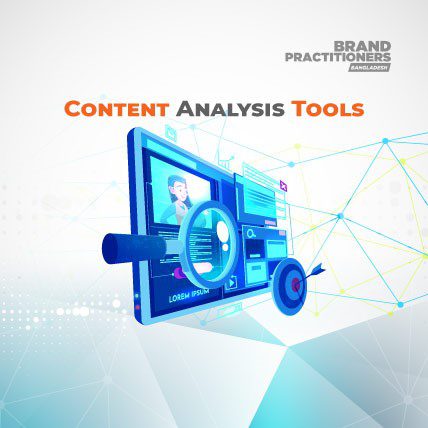Creating engaging content that also ranks for the right keywords has come more and more grueling through the times, especially since the algorithm of so numerous hunt machines has come excellent at telling which pieces are worth ranking and which bones are not.
Grammarly
Grammarly is a great tool where you can solve any grammar error. If your content has any error the tool highlights that and solves the problem. Still, Grammarly can surely help you, If you intend on writing your own content and you have no tolerance when it comes to editing it. Naturally, you’ll still have to throw an eye over the textbook, but you are not going to have to worry about spelling or punctuation miscalculations.
Google Analytics
The enjoyable thing about Google Analytics is that it’s fully free to use. Still, with its backing, you can still see how numerous runner views you’re getting on composition, what referral business you have, the time your blog compendiums spend on that runner, and numerous further details. Naturally, there are numerous other details that you can check out in Google Analytics. Similar as for your other runners or general information on how people bear on your point and where they live, for illustration.
Google Search Console
While also not a content analyzer tool in itself, Google Search Console can give you a hand at telling whether you have poisonous links pointing to your runners or if there are any bottleneck problems.
The hunt analytics is enough good, too, since you can check out your most popular runners and the terms that people substantially tend to use when stumbling on your website.
Unlike Google Analytics, it’s extremely easy to use. While it might not tell you everything you need to know, and it won’t give you suggestions on what you can do to ameliorate your content, it’s still a free tool that you should take advantage of.
SEMrush
Did you know that SEMrush actually includes a unique tool for assaying content? If you formerly are a subscriber (the tool costs a bit lower than$ 100 per month), you can surely take advantage of this point. The Content Analyzer is a combination of two functions — Content Inspection and Post Tracking. With its help, you can do a variety of effects, similar as assaying your SEO visibility for specific runners on your point to assessing referral business you might or might not be getting from guest posts.
The nice thing about SEMrush’s Content Analyzer is that it also lets you add tasks and shoot them out to other tools, similar to Trello or Google Timetable. So, if you’re a content director and you work with several different people, this one can surely come in handy.
Ahrefs
Ahrefs has the utmost of the features you’ll find in SEMrush, so it all comes down to what you prefer using. One of the downsides to choosing Ahrefs over other SEO tools out there’s that they regularly produce updates, which means that there could be days where the data you see isn’t refreshed duly or you might not be suitable to use Ahrefs altogether. One thing we’ve done with Ahrefs in history was to choose aged posts that ranked for zero business and zero keywords. You can use the Batch Analysis point in the software and dissect all of your point’s runners (we explosively suggest adding all of them to a spreadsheet nearly so that you don’t have to go through your whole point when you have to do this).

Also, you download everything ( also in a spreadsheet), arrange the runners grounded on keywords business, and choose the bones getting 0 on both of these criteria, especially if they’ve dated content that’s inapplicable these days. Do keep in mind that after you’re done with all of this, you also have to do commodity about your internal links. You can moreover use redirects, but since you shouldn’t have too numerous of them on your point, we indeed suggest manually removing the links to these recently dead runners and also resubmitting your sitemap. It might take some time, but we’ve planted this process to be relatively effective. And let’s be realistic — if you write about content marketing or SEO and you’ve been doing so for the once decade, some of the papers you might have published in early 2010 might not be ranking for any keywords any longer.
Yoast
Yoast is a good choice, but we’ve also worked with AIO SEO in history and they both do the same thing — especially if you conclude for the free interpretation.
These tools are relatively good at giving your runner a score grounded on the keywords you have used, your meta titles, meta descriptions, and indeed the images and internal or external links you’ve added to your textbook.
Surfer SEO
The Surfer SEO Content Editor is enough good and we’ll give it that, but it can also slightly mislead you in some ways. For illustration, the tool will suggest that you use some hunt terms veritably frequently, occasionally indeed up to 70 times in a composition of two words. But the biggest advantage of Surfer SEO is that the platform actually lets you add several links to contender runners (on the same content). Once you have done that, the tool won’t only suggest the keywords you should use but also give you some questions you can add to a FAQ section, for illustration.
Try to end at a score of at least 75, if at all possible, but do keep in mind that the tool also bases its score on the presence of images and the number of paragraphs you have in your textbook, for illustration. Still, your score will drop (which is silly since people don’t really like reading long paragraphs anyway, so there should be as numerous of them as possible), If you go over the limit. We’ve planted that using a combination of several different tools, alongside Surfer SEO, seems to offer stylish results. For illustration, you could use this software and also look at the data that Keywords Everyplace can offer and perform some introductory keyword exploration in Ahrefs or SEMrush.
Ryte
This is actually a collection of tools all into one, but one of the features that work stylishly for optimizing your papers is Content Success. All of the suggestions that the platform will show you’re grounded on competitive analysis.The content editor effectively suggests what keywords you should add to (or get relieved of) your papers. It’s enough to use.
As for pricing, they’ve several different plans available. The introductory individual bone costs 75 euros per month and gives you access to yearly sessions for three systems and three different druggies. Bigger plans also live, and they’re geared toward business and enterprise guests.
Clearscope
The reason we decided to showcase this tool then’s that it works with several different languages, not just English. It’s relatively likely that they’ll include more in the future, but at the time we’re writing this, Clearscope workshop for Dutch, Spanish, French, and also Italian.
So, for illustration, if you have eCommerce websites in these countries, Clearscope could be relatively helpful for your business. The platform gives you word on the most important keywords you have to add/ remove from your dupe, your word count, your readability, and a variety of other criteria. On the other hand, this isn’t the cheapest content analysis tool out there since the introductory plan starts at $170 — but if you have to work with these languages, you should still consider it.













